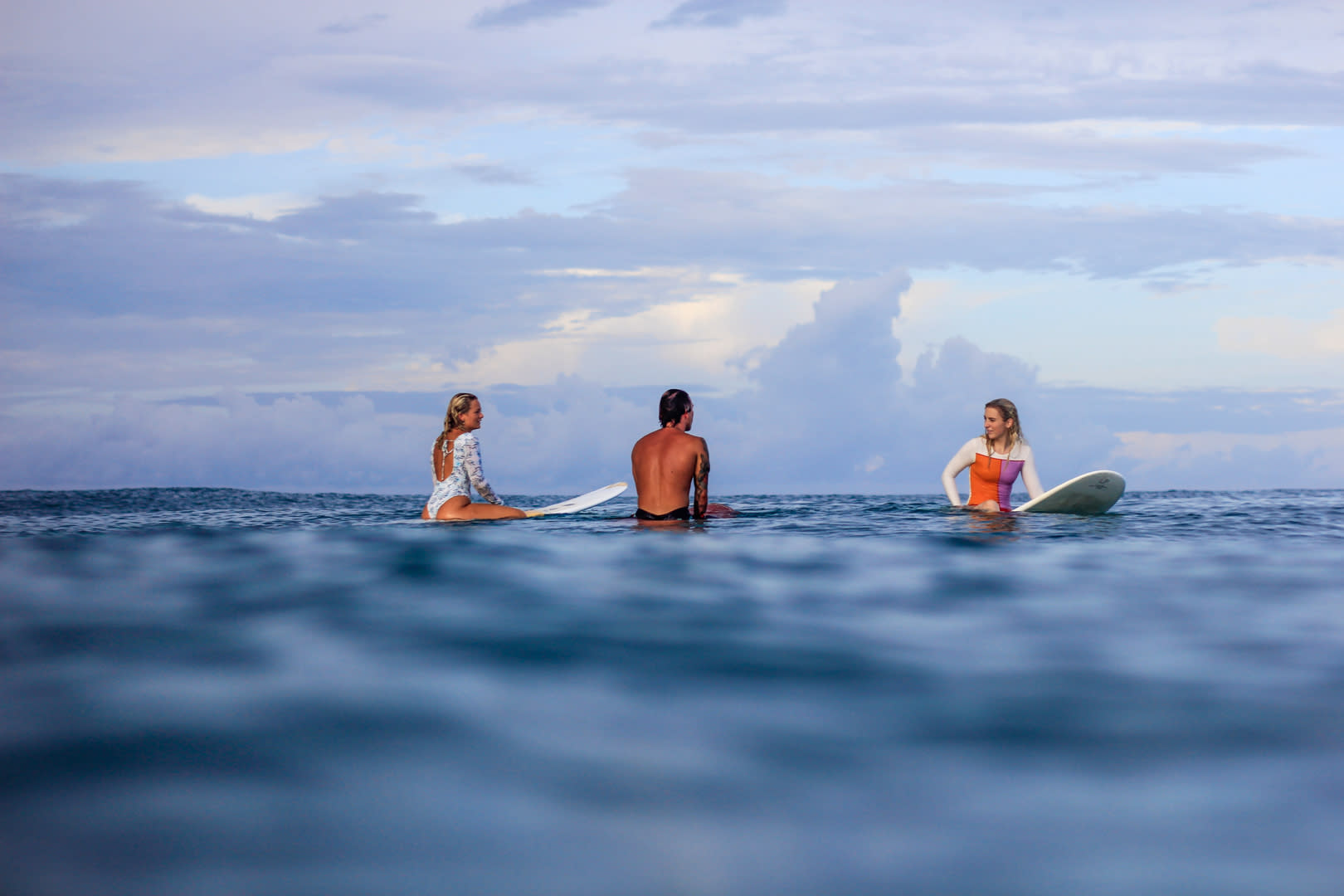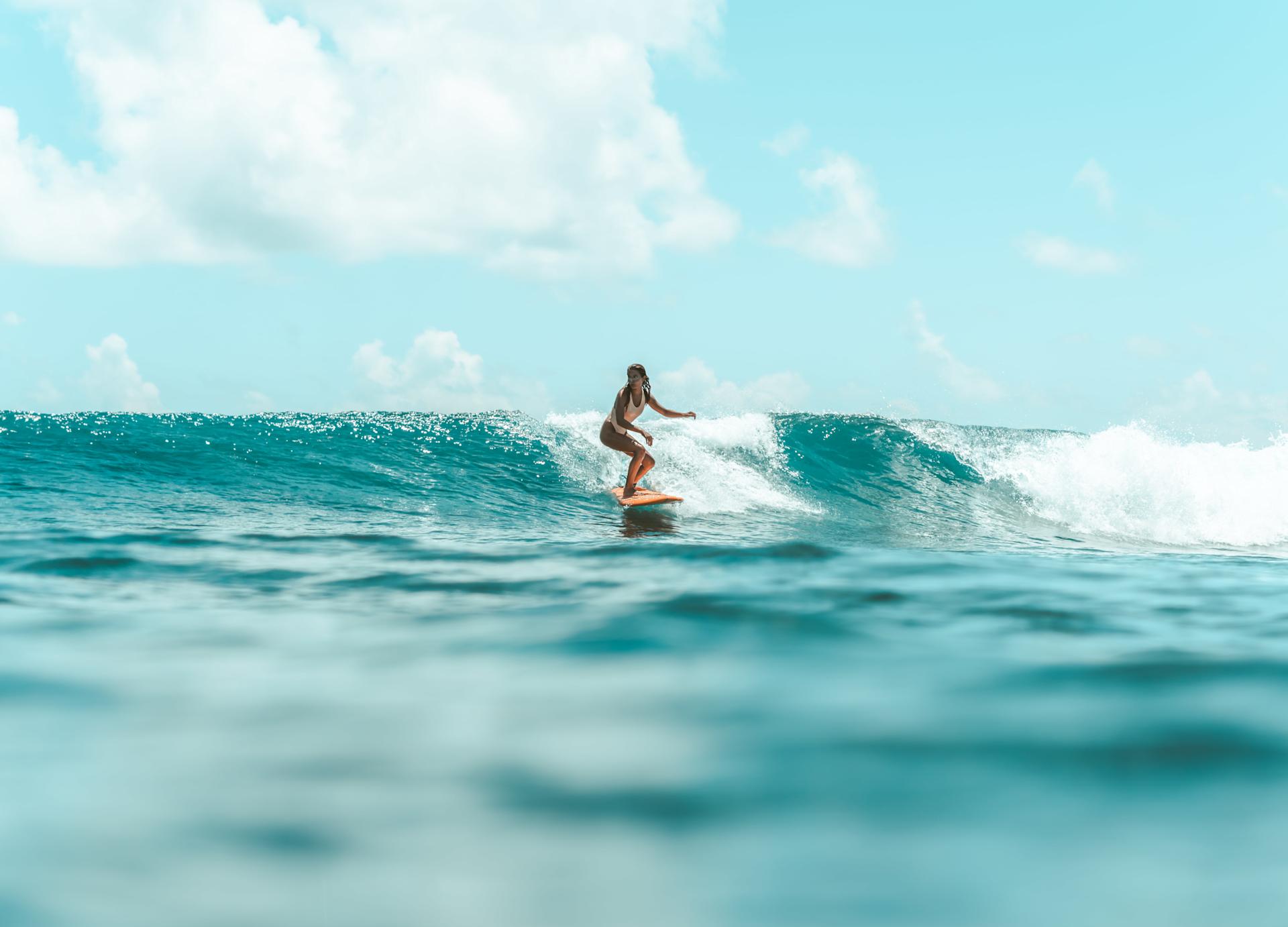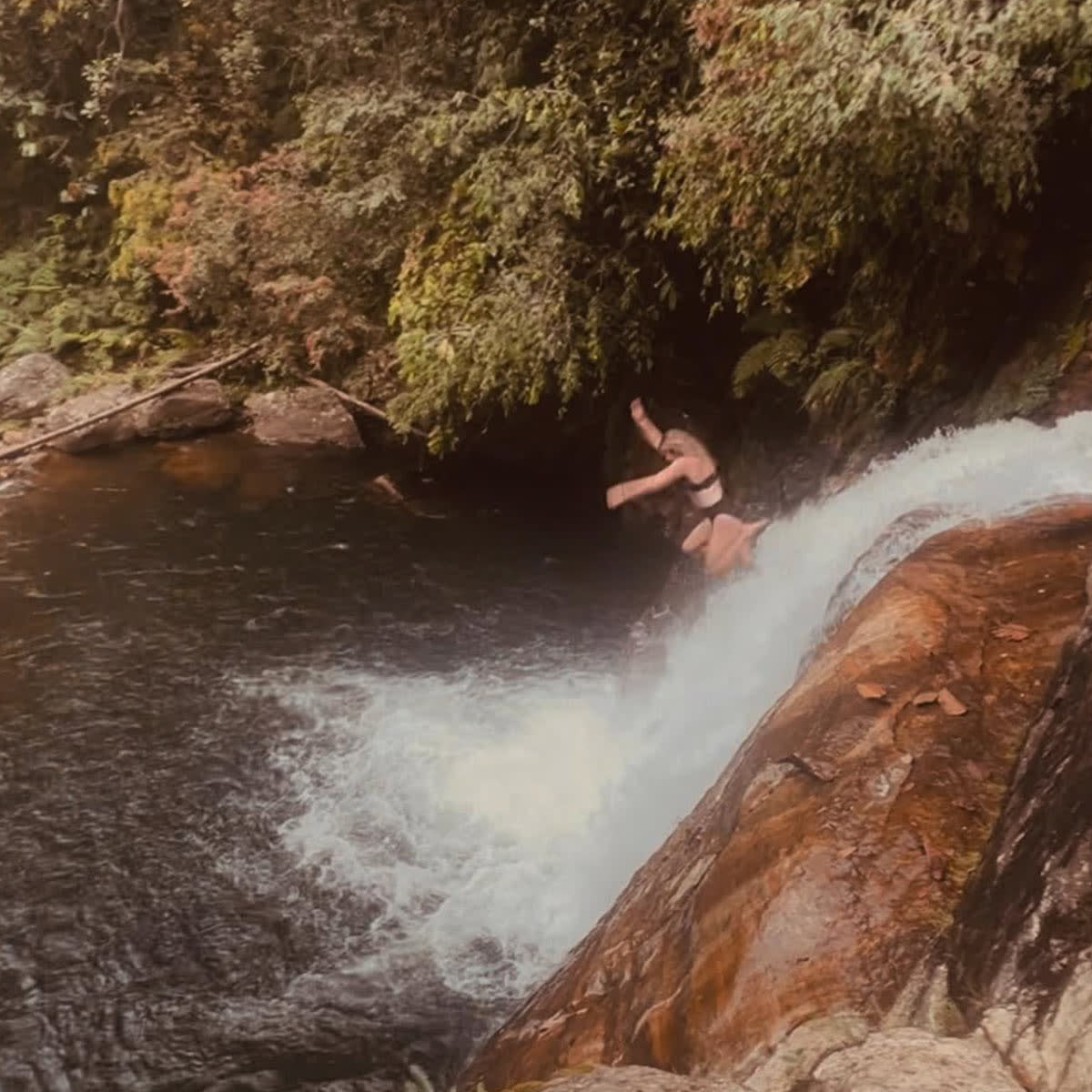
Top 10 surfing tips for intermediate surfers
June 30, 2025Time to step into the next surf level? This article is packed with intermediate surf tips to help you surf better, from wave selection and positioning to improving your turns and boosting confidence in the water. If you've been asking how to improve surfing or searching for the best tips for intermediate progress, these insights will help you catch more waves faster. Let’s unpack our top 10 intermediate surfing tips and tricks that will help you improve your surfing skills!
Few things compare to the amazing feeling of improving your surfing, and few things are as frustrating as not getting it right and plateauing. We have collected our best tips to help you improve your surfing techniques!
1. Surf the right board for your level
An easy mistake is leaving your beginner's board too quickly to advance to a shorter one. But surfing a board that’s too advanced for your level can knock the fun right out of the session. A board that is too small will be harder to paddle and catch waves with, so you might just end up frustrated and exhausted. You can’t improve your surfing skills without actually getting on the waves, so make sure the board isn't too small.
Do you know which board works for you? Great! If not, check out our blog post on how to choose the best surfboard for your level.
2. Use the peak of the wave as your take-off point

Make sure that you are at the right spot before you decide which waves to catch. Staying too far on the shoulder is a common mistake intermediate surfers make. You want to catch your wave at its highest point, also known as the peak. This is where you can generate the most speed since this also is the steepest point of the wave.
By doing so, you will get a longer and more powerful ride. If you catch a wave on the shoulder, on the other hand, the ride will be weak and short.
3. Keep it low
When you do the popup, don’t go all the way to a stand-up position. You want to keep your body low on the board and stay centred. Standing too upright will make it harder for you to shift your weight, perform manoeuvres and balance properly. So keep your knees bent!
4. Generate speed and power
Creating your own power and speed is a big separator between the experienced and the inexperienced surfers. More power and speed = more possibilities on the wave! By taking advantage of the different parts of the wave you will be cracking the code of speed and acceleration.
For this tip to be useful, you need to put tips number 2 and number 3 into the equation as well; start at the most powerful part of the wave and have a proper surfing stance. Start to generate speed from the peak of the wave and then use your entire body to “pump”; to smoothly surf the face of the wave up and down.
The vital thing here is to know at what moments to shift your weight on your board. When you decompress you make yourself lighter and when you compress you make yourself heavier. You want to be light when surfing up the wave, and heavy as you surf down.
5. Foot position
By shifting your foot position on the board you can also create your own speed. Shift your back foot towards the tail of your board when you want to change direction or decrease speed, when you want to increase the speed you move your feet more forward.
6. Look where to go and your body will follow

To put this simply: your body will go where your eyes look. Are you looking down on your board while you surf? If yes, then you are very likely to head in that direction and fall.
This is a tip that’s easier said than done though, as beginner surfers are taught to look towards the shore it might be a little tricky to unlearn that behaviour as an intermediate surfer.
But when you get into the habit of it, it will make a big difference in catching waves and falling off them! So, don't look at the beach or down on your board, keep your gaze down the line of the wave – at the place where you want to surf.
7. Improve your paddling technique
A key aspect of improving your surfing skills is to get more power in your paddling. As your surfing progresses your paddling will get better, but you will also get better at locating where to position yourself on the wave which will help you save your energy for when you need it, not to waste it paddling too far off on the shoulder. Here are some tips to improve your paddling:
When your hands reach the water as you paddle, keep your elbows high.
Start the paddling stroke far in front of you and make your strokes powerful and long.
Have your back arched.
Have your hands in a cup shape with your fingers closed.
Practice on land. The muscles in the middle back are working the most during your paddling, therefore it’s a good idea to practice exercises like the superman and reverse flyes. Although, paddling and surfing will require your entire body so don't limit yourself to only doing back exercises.
8. Observe more advanced surfers

By observing the more advanced surfers in the water, you might pick up a thing or two. Seeing how they take off, generate speed and where they look during the ride can be a great way for you to learn and apply it to your own surfing.
Even if you can't surf like them yet, you will know how the moves are supposed to look.
9. Learn from yourself and your mistakes

Observing your own surfing can also be a great way to improve. Ask someone to take a video of you surfing, look at it after your session and review what looks good and what needs improvements. This is a great way to see your own technique. You might even see some bad habits that you weren't even aware of!
Just don’t be too hard on yourself, this is a way of learning and improving not beating yourself down for not being better.
10. Enjoy your time while getting better
The best tip we can give you to advance in your surfing is to keep it pleasurable. If you have fun and enjoy your time in the ocean you will gradually improve. The central part of being good at anything is to stay consistent with it, which is much more likely that you will if you actually like what you're doing. Advancing in surfing is a difficult and time-consuming sport, so make sure you spend that time having fun and being in the moment!
How to have more fun while surfing:
Ditch the pressure and embrace the stoke: Surfing isn’t about being perfect; it’s about having fun. Let go of expectations and just enjoy the ride!
Try a different board: Switching up your board can make even familiar waves feel fresh. Go for a longboard, twin fin, or something completely unexpected, and see how you like it!
Share waves with friends: Did I hear party waves?! (where you and a buddy ride the same wave) AKA: double the stoke. Just make sure no one gets in each other’s way!
Challenge yourself (but keep it playful!): Set small goals like trying a new maneuver or paddling out in slightly bigger waves—but keep the vibe light and fun, and don't be too hard on yourself if it doesn't go the way to expected it to, its all part of the process!
Laugh off the wipeouts: Wipeouts happen to everyone. Instead of getting frustrated, turn them into a game—bonus points for the most dramatic fall!
Take a break and soak it in: Sometimes, the best way to enjoy the ocean is to sit on your board, watch the sunset, and just appreciate where you are right at that very moment.
Join a surf camp & meet like-minded people: Nothing beats sharing waves, laughs, and good vibes with an epic crew of surfers from around the world.
How to improve as an intermediate surfer?
To level up your skills, focus on surfing tips like improving your paddling technique, reading waves better, and practicing more critical maneuvers like bottom turns. The key to how to get better at surfing is consistency—surf regularly, analyze your sessions, and don’t be afraid to push your limits while keeping it fun.
What is considered intermediate in surfing?
An intermediate surfer can be someone who just passed the beginner stage or surfing to someone who has surfed for years; it's a broad group and sometimes hard to navigate! Generally, an intermediate surfer can catch green waves, ride down the line, and perform basic turns. Some are more independent than others. If you can paddle out in head-high waves, take off on unbroken waves, and link turns, you're likely at an intermediate level.
How long does it take to get intermediate at surfing?
There is no fixed timeline, as it depends on how often you surf. Following tips for intermediate surfing and dedicating time to ocean knowledge, paddling strength, and board control can help you improve your surfing faster. Surfing with a surf school is a great way to improve in a safe way.
NEWSLETTER
Stay up to date, sign up for our newsletter

Beatrice Lindfors
About the author: My name is Beatrice, but Bea for short, and I’ve been a writer and content creator for Lapoint since 2022. My life revolves around my laptop and backpack as I travel the world, always with a stop in Ericeira; the camp vibe and the Portuguese sunsets have my heart.
Life goal? Visit every country.
Obsession? The Sri Lanka waves, the Atlantic Ocean and tracking down the best coffee (whichever my current location is).

